
CHICAGO (AdAge.com) — Coca-Cola Co. is trying to start an industrywide movement toward a “value-based” compensation model like one it’s adopted that promises agencies nothing more than recouped costs if they don’t perform — but profit margins as high as 30% if their work hits top targets.
Usually tight-lipped Coke disclosed its plans at the Association of National Advertisers Financial Management Conference in Phoenix on April 20, saying it wanted to nudge the industry into adopting value-based models as a standard practice. If it succeeds, agencies accustomed to being able to book profits long before they deliver work won’t have that sort of certainty anymore.
“We want our agencies to earn their profitability, but it’s not guaranteed,” said Sarah Armstrong, Coke’s director of worldwide media and communication operations, the driver behind the move for Coke, which spends some $3 billion a year on global advertising. “We need them to be profitable and healthy, but they have to earn it through performance.”
Coke’s shift from paying a flat fee based on hours worked began in five markets last year. The model is rolling out in at least 35 more this year and will encompass all of the company’s ad- and media-agency relationships by 2011. The concept of value-based models has been a hot topic in the industry for at least a decade, but few marketers have attempted to apply it. (Procter & Gamble is perhaps the furthest along but uses it on only 12 of its brands.)
Ms. Armstrong took pains to note that the process involved considerable give and take with agencies that were briefed on Coke’s plans and were given opportunities to voice concerns. “There were some pointed questions,” she said. “But our agencies read the trades, and they know what P&G did. They knew at some point someone would take this path; they just didn’t know it would be us.”
Put into action
Coke’s agencies include some of the most creative in the media and agency worlds, including Wieden & Kennedy, Crispin Porter & Bogusky, Starcom MediaVest Group and Mother, among dozens of others. Some agency executives, speaking privately, said they couldn’t argue with the theory behind the shift, but had concerns about how it might work in practice.
“Look, if you’re talking about getting paid more because you’re adding value to a project, I think that’s terrific,” said a senior executive at one Coke agency that has yet to switch to the new model. “The tricky part is how you define value.”
Traditionally, defining the value of an assignment has been the job of the agency, which tells its client how many people and how much time it’ll need to accomplish a given project. Under its new model, Coke will determine the value of assignments based on a range of factors including the work’s strategic importance, the talent involved and whether other agencies could duplicate the work — if they could, it’s worth less.
After those factors are used to set the value of a project, the agency’s performance and the business results that follow determine what, if anything, the agency deserves to be paid beyond its upfront costs (which, in practice, are sometimes inflated). If all targets are hit, the agency could make as much as 30% on a project; if all targets are missed, the agency won’t make any profit at all.
Supporters of the approach acknowledge that it’s not a perfect approach to measure the value agencies add, but they call it a massive improvement over a status quo that equates hours spent with value delivered. “I’d rather be approximately right than precisely wrong,” said Tim Williams, founder of the agency-compensation consultancy Ignition.
Effort vs. value
Other major marketers present perked up at Ms. Armstrong’s presentation. “It got my juices flowing,” said Keith Levy, VP-marketing at Anheuser-Busch, which slashed agency fees earlier this year. “We agree with Coke that [agency] effort doesn’t necessarily equal value … but it also shows you how much time and effort it takes to get there.”
Though the shift comes amid a brutal economic downturn that has prompted many marketers to slash agency fees to save money, Ms. Armstrong said cost savings had little to do with Coke’s move to a new compensation model. It’s “ironic,” she said, but the shift began in 2006. She declined to comment on whether Coke saw any savings in the five test markets — Australia, China, Germany, the U.K. and the Philippines — in which it deployed the new model last year.
However, cost reductions have been a priority at the company of late. Last summer, CEO Muhtar Kent said Coke would look to save between $400 million and $500 million a year by the end of 2011. Marketing was said to be a primary focus. The company also has been looking to optimize its use of agencies, slashing its global roster by more than half in the past 18 months. Despite that, Coke spent $3 billion on advertising globally last year, a $200 million increase from the previous year.
The new model, in theory, ought to better align the quality of Coke’s advertising with the size of its budget, but the approach is not without its risks. Will Coke’s agencies be willing to take the same creative risks if striking out means they’ll see no profit for their trouble? “That has not been a concern,” Ms. Armstrong said. “I have a fundamental belief that our agencies are competitive enough that they are going to bring their A-games no matter what.”
How Coke’s new compensation system works
BEFORE: Agencies and Coke negotiate in advance how much profit the former will see on a given project.
AFTER: Agency is guaranteed only recouped costs, with any profit coming only if certain targets are met.
BEFORE: Agency decides what Coke should pay for a project based on the time it expects to expend on it.
AFTER: Coke tells agencies how valuable a project is based on strategic importance, whether other agencies could deliver the same outcome, and other factors.
Change at Procter & Gamble
Slowly but surely, Procter & Gamble Co. is moving more brands toward a model that makes a single agency lead contractor over the rest of a brand’s far-flung marketing-services roster, which includes maintaining control over hiring, budgets and payments for other agencies. The system is having a growing impact on what people close to P&G estimate as $900 million to $1 billion in agency fees annually.
So far, it’s only been applied to about a dozen brands in so-called pilots, but that’s up from five a year ago. The new agency deal now covers brands accounting for about 26% of P&G’s $3.1 billion in U.S. measured media spending, as counted by TNS Media Intelligence, including eight of P&G’s 21 billion-dollar brands. “I wouldn’t be surprised if more brands adopt this,” said P&G spokeswoman Martha Depenbrock. It’s not a corporate mandate, she said, but it appears to be working well.
The system fosters better collaboration and holistic-marketing plans, she said, and it’s more cost-effective for P&G and agencies. The “brand agency leader,” or “BAL” model in P&G-acronym parlance, replaces one still used by most P&G brands in which creative agencies are compensated as a percentage of brand sales and other shops mainly get paid fees.
That model saw P&G through some of its highest-growth years earlier in the decade. But its drawbacks include numerous and complex transactions.
People close to the company say the old system penalizes brands that move from plans heavy with TV and print, because creative agencies get paid the same even when digital and other specialty shops get paid more.
Sales-based compensation remains in the BAL model, but it’s a much smaller factor. The BAL gets “value-based” compensation, or fees based on negotiated value of the work to the brand rather than hours worked. That fee increases or decreases based on brand sales and market share and agency evaluations, Ms. Depenbrock said.
Some packaging innovations from Coke:
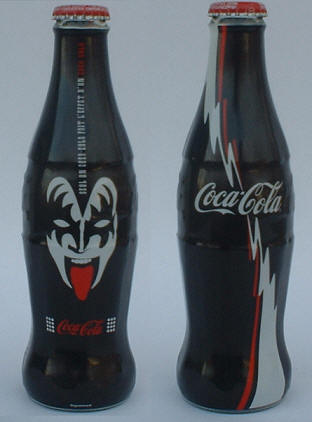 2005 KISS Gene Simmons, France, Wrapped Coke Bottle!
2005 KISS Gene Simmons, France, Wrapped Coke Bottle!
 2005 – Only released in Germany, Spain, Brazil, Mexico, and Italy. The bottles are printed with irredescent inks, so they react to blacklights for an added cool factor. The bottles are also half-filled, so they can be mixed with alcohol, making the product “100% nightclub-certified cool.”
2005 – Only released in Germany, Spain, Brazil, Mexico, and Italy. The bottles are printed with irredescent inks, so they react to blacklights for an added cool factor. The bottles are also half-filled, so they can be mixed with alcohol, making the product “100% nightclub-certified cool.”
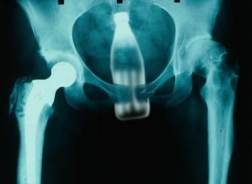 Two nurses from Mercy Walworth Medical Center in Lake Geneva were fired after allegedly posting pictures of a patient’s x-ray on Facebook. The man had presented himself to the ER with a “sex toy” lodged in his rectum and apparently the nurses found it so amusing that they chose to take pictures using their phones and load them onto their facebook profiles. Not exactly a six-pack Coke was known for!
Two nurses from Mercy Walworth Medical Center in Lake Geneva were fired after allegedly posting pictures of a patient’s x-ray on Facebook. The man had presented himself to the ER with a “sex toy” lodged in his rectum and apparently the nurses found it so amusing that they chose to take pictures using their phones and load them onto their facebook profiles. Not exactly a six-pack Coke was known for!
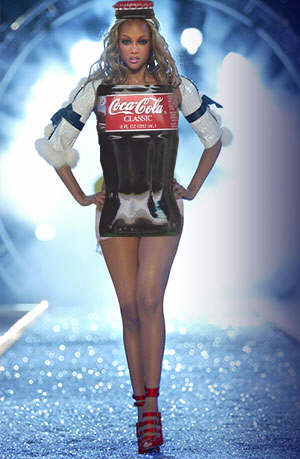 Coke adds life!
Coke adds life!
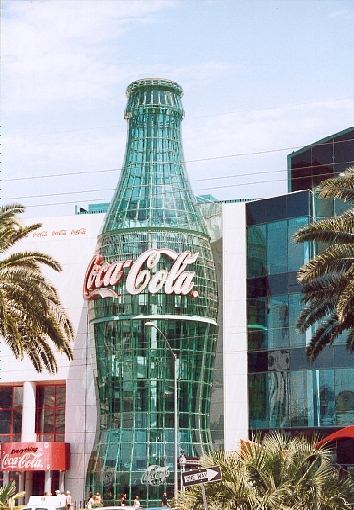 This enormous Coke bottle used to house a Coca-Cola museum where you could sample dozens of different Coke products from around the world. It’s now a wedding chapel.
This enormous Coke bottle used to house a Coca-Cola museum where you could sample dozens of different Coke products from around the world. It’s now a wedding chapel.
 Aluminum Coke bottle cans.
Aluminum Coke bottle cans.
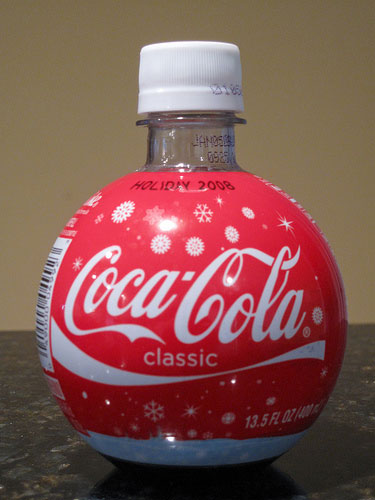 2008 Holiday packaging.
2008 Holiday packaging.
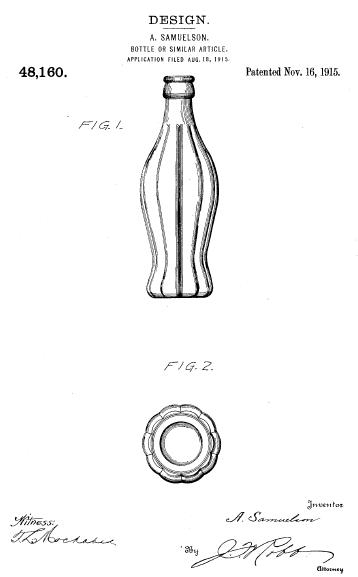
The original patent for the Coke bottle. Simple, elegant and functional. Not much has changed in 94 years!
Coke adds life and The AFTERLIFE adds…life to all your graphic design thirsts. Pick up a bottle, today!
